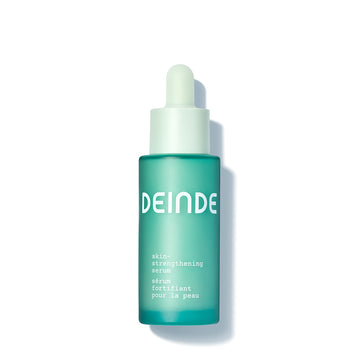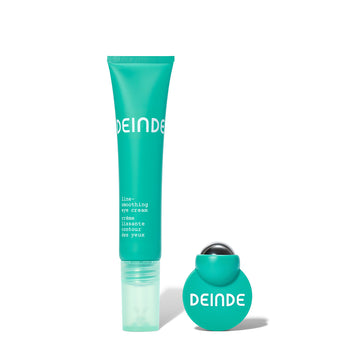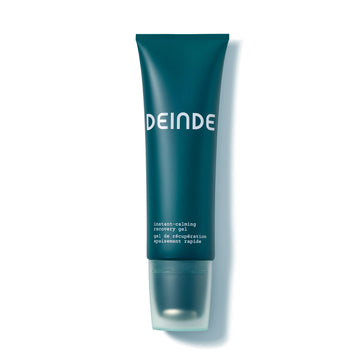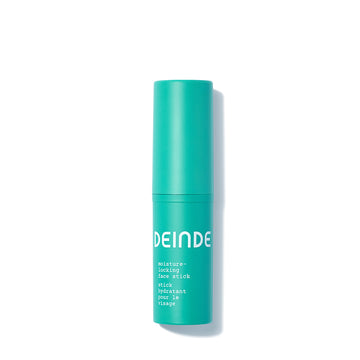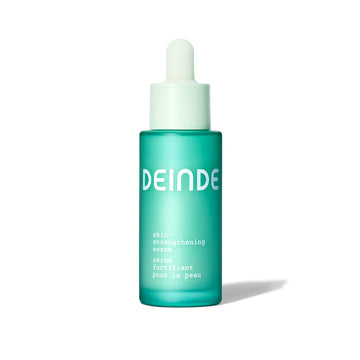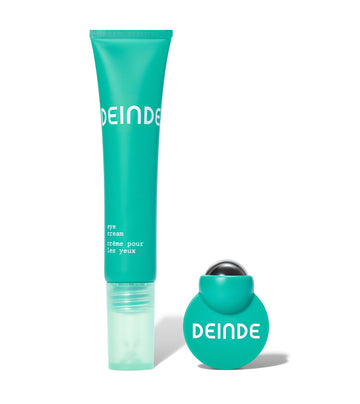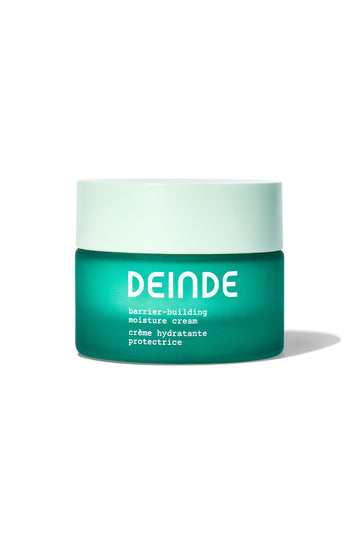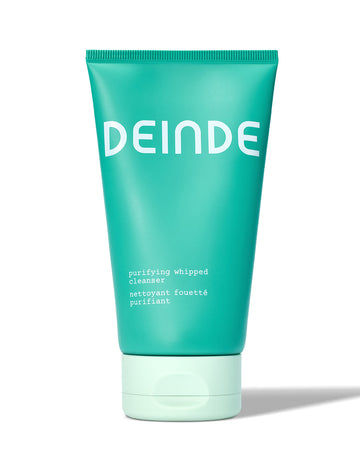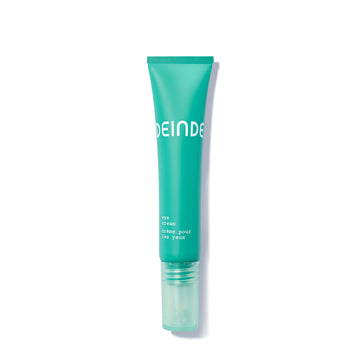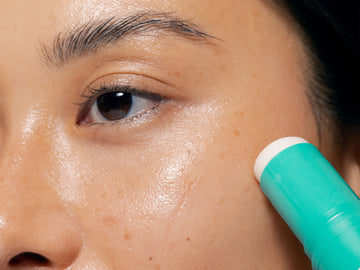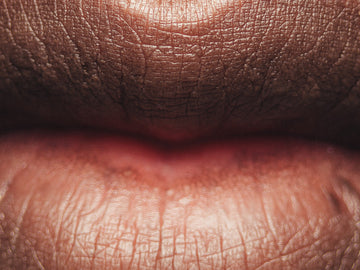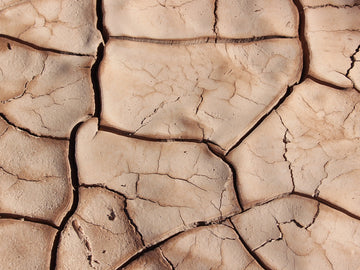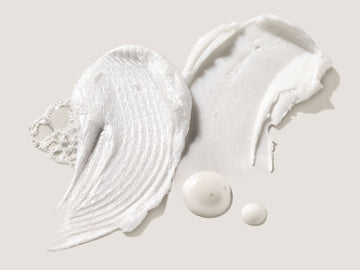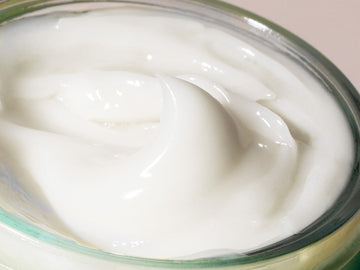
How Much Moisturizer Should I Use?
We’ve all been there. It’s late at night, your teeth are brushed, and you catch yourself staring at the mirror. You lean in, getting closer and closer to your reflection wondering, “Wait…am I doing this all right? How much moisturizer am I supposed to be using again?”
The question of how much moisturizer you should use is both incredibly meaningful and incredibly plain. You would think there would be an obvious, overt answer that is consistent across products (like serving sizes on food packages… which… is a topic we’ll save for another day…) Of course, the nature of skincare is that there is varying advice and product recommendations, so finding the right amount for you can be elusive.
But given that DEINDE is so grounded in science and research, we wanted to help demystify the question, “How much moisturizer should I use?” We’ll dive into the nuances of moisturizer application, dispel myths, and offer practical tips for fighting inflammaging.
Why Should You Use a Moisturizer in the First Place?
One of our main passions at DEINDE is protecting and repairing our beloved skin barrier (which, in turn, protects us!). Moisturizer is a large part of that process.
The skin barrier—when at its best—fights hard against inflammaging, which is chronic inflammation of the skin. Factors such as harsh weather, pollutants, moisture loss, stress, and aging can compromise the skin barrier over time, making the skin more sensitive to irritation, dryness, and accelerated signs of aging.
The ears, face, neck, and chest are much more sensitive (and exposed!) to environmental stressors than the rest of the body is. Therefore, these areas require even more moisture to repair themselves and ward off concerns like moisture loss, fine lines, and dark circles. A solid moisturizer contains active ingredients like humectants, emollients, and occlusives, which work as a hydration team to seal in moisture and improve the overall health and appearance of the skin. You’ll commonly find hyaluronic acid, antioxidants, and ceramides in moisturizing products to help combat water loss and provide additional skin benefits. Not to mention, the act of moisturizing—when done properly—can also serve as a circulation-boosting massage that helps to stimulate new cell generation and collagen production.
Spoiler Alert: More is Not Better
If you find the process of moisturizing to be ultra-relaxing, we have tough news: moisturizing more frequently isn’t always better. Even if you carefully consider what type of moisturizer you use—ensuring that you choose one that flatters your skin type—adding excessive amounts of moisturizer can overwhelm your skin. This can lead to clogged pores, breakouts, and a greasy complexion, especially if you’re already dealing with oily skin.
So what does this mean in terms of volume, exactly? Simply put, do not feel pulled to slather on multiple coats of moisturizer, even when your skin is feeling very dry. Follow appropriate volumes as recommended below, but stick to one pass over the face.
So how much is too much, and how little is too little? Let's break things down.
How to Determine How Much Moisturizer You Should Use
The amount of moisturizer you should use depends on various factors, including your skin type, the specific weight of the product you're using, and environmental conditions. Here are general guidelines to help you gauge the ideal amount for your skin:
-
If you have dry skin or use a thick / oil-based moisturizer, you'll likely need a more generous amount to effectively hydrate and nourish your skin. As a general rule, aim for a nickel-sized amount or slightly more to ensure adequate coverage for your entire face.
-
For normal or combination skin types, a pea-sized amount of moisturizer is usually sufficient to maintain optimal hydration without feeling greasy. This is likely the case if you’re using cream-based moisturizer.
- If your skin is oily or acne-prone, you want to use less moisturizer as well as focus on a lightweight, oil-free, or gel-based formula that’s non-comedogenic. As long as you’re using a lightweight moisturizer, you can use a dime-sized amount of product to avoid exacerbating oiliness or clogged pores.
Then, of course, there are the magical new products that don’t play by dollop sizes at all. A new trend in applying moisturizer is the on-the-go moisture-locking face stick—aka the Goldilocks of moisturizer. It’s a compact face balm that combines the best of all worlds when it comes to texture, weights, and formulas. If you’re using our moisture-locking face stick, all you need to do is glide it over your skin once in a thin layer, and then gently massage in any unabsorbed areas with your palms, taking care to be gentle around your eye area so as not to damage the sensitive skin near your eyes. (Upward strokes, please! More on this technique to come).
Other Criteria to Consider
There are a lot of variables at play here. There’s the type of moisturizer you’re using, the environment you’re in, and your natural skin type. Therefore, it’s important to take a close look at your routine to ensure you know how much moisturizer you should be using.
Some moisturizers come with specific instructions regarding the amount to use. That’s great and helpful if you can find it. Start there, and if the amount feels wonky to you or is not working, consider consulting with a dermatologist.
Some specialty moisturizers, such as those formulated for nighttime use or targeted treatment of specific skin concerns, may require different application techniques or quantities.
And then there are the external factors you might want to consider. If you’re in a dry or cold climate (or season), you may need to increase the size of your dollop a little bit more to help combat moisture loss from the skin. You’ll know when this is the case. Alternatively, if you’re in a humid environment (or vacationing!), you can decrease the volume a bit to prevent excess greasiness.
How Should You Apply Moisturizer?
No matter what kind of moisturizer you use, how you apply it is actually the final piece of the puzzle, since that can determine the overall health of the skin.
-
Preparation Is Key → Using a cleanser before you apply moisturizer helps you set the stage for proper absorption. However, don’t be too hasty to make your skin bone dry before starting your skin-layering routine! Applying moisturizer to minimally damp skin helps to lock in moisture. Whether you use a toner or a quick spritz of water, additional moisture will enhance the skin’s ability to attract and lock it all in.
-
Technique Matters → The old days of “rubbing” anything into the skin are done and gone. Consider warming your moisturizer between your palms before gently pressing it into the skin—which prevents any kind of abrasion or friction. If you need to work the product more deeply into the skin, upward strokes are recommended to keep the skin firm and cheekbone-ready over time.
- Be Consistent → Moisturizing “that one time” isn’t going to move any needles in your skincare routine. Continuing to show up for your skin barrier’s repair twice daily will yield noticeable results over time—or better yet—no results because you won’t be seeing any signs of premature aging.
How much moisturizer you should use is not a one-size-fits-all situation. Since moisturizing is so essential to help protect against inflammaging, it’s important to carefully consider how much moisturizer you should use. By understanding your skin type, choosing the right formula, and applying it effectively, you can ensure your skin stays hydrated and protected.
Studies cited:
- Skin anti-aging strategies | PMC
- Moisturizers: reality and the skin benefits | NCBI
- Effect of long-term use of moisturizer on skin hydration, barrier function and susceptibility to irritants | NCBI
- The science behind skin care: Moisturizers | NCBI
